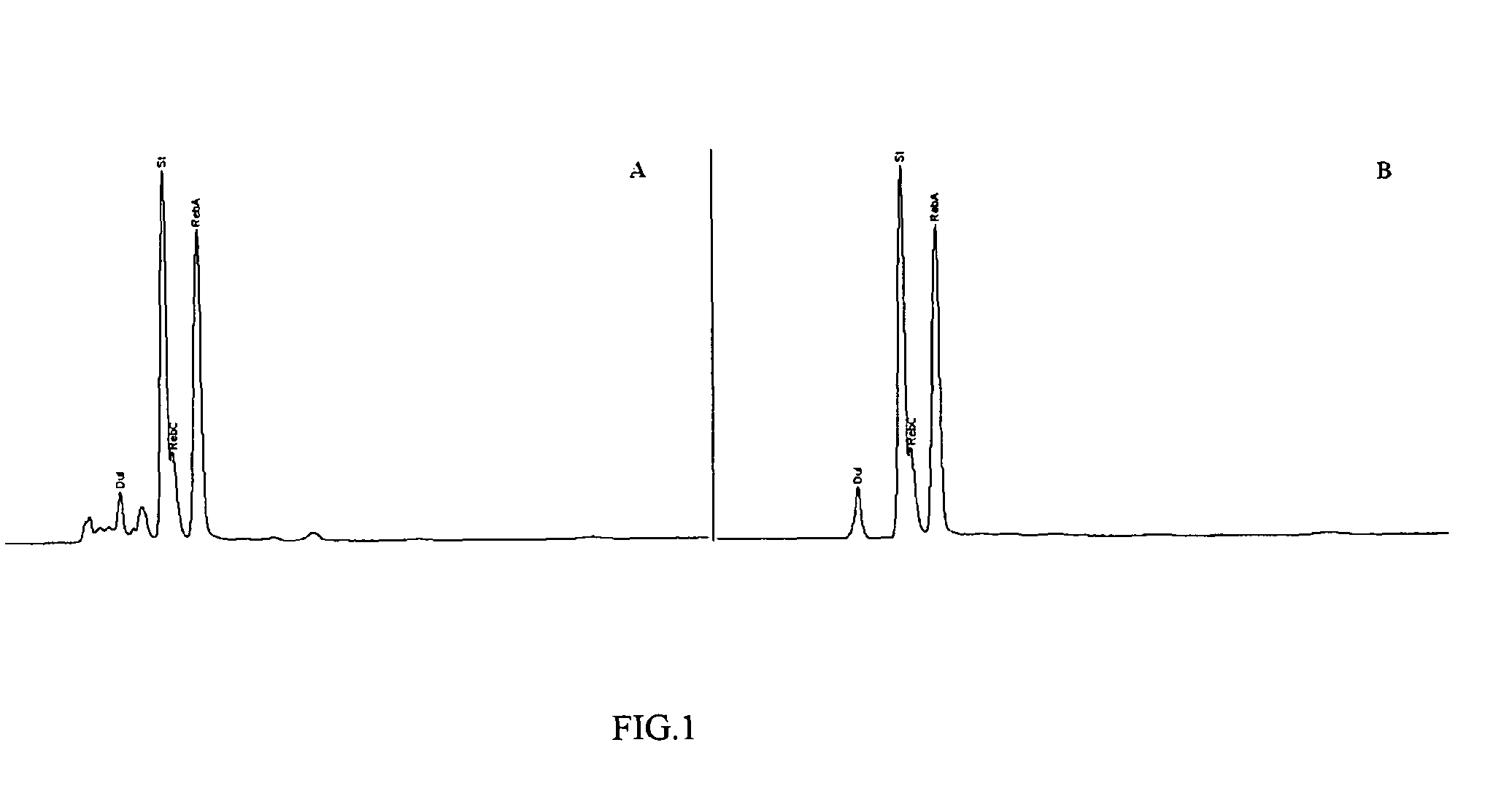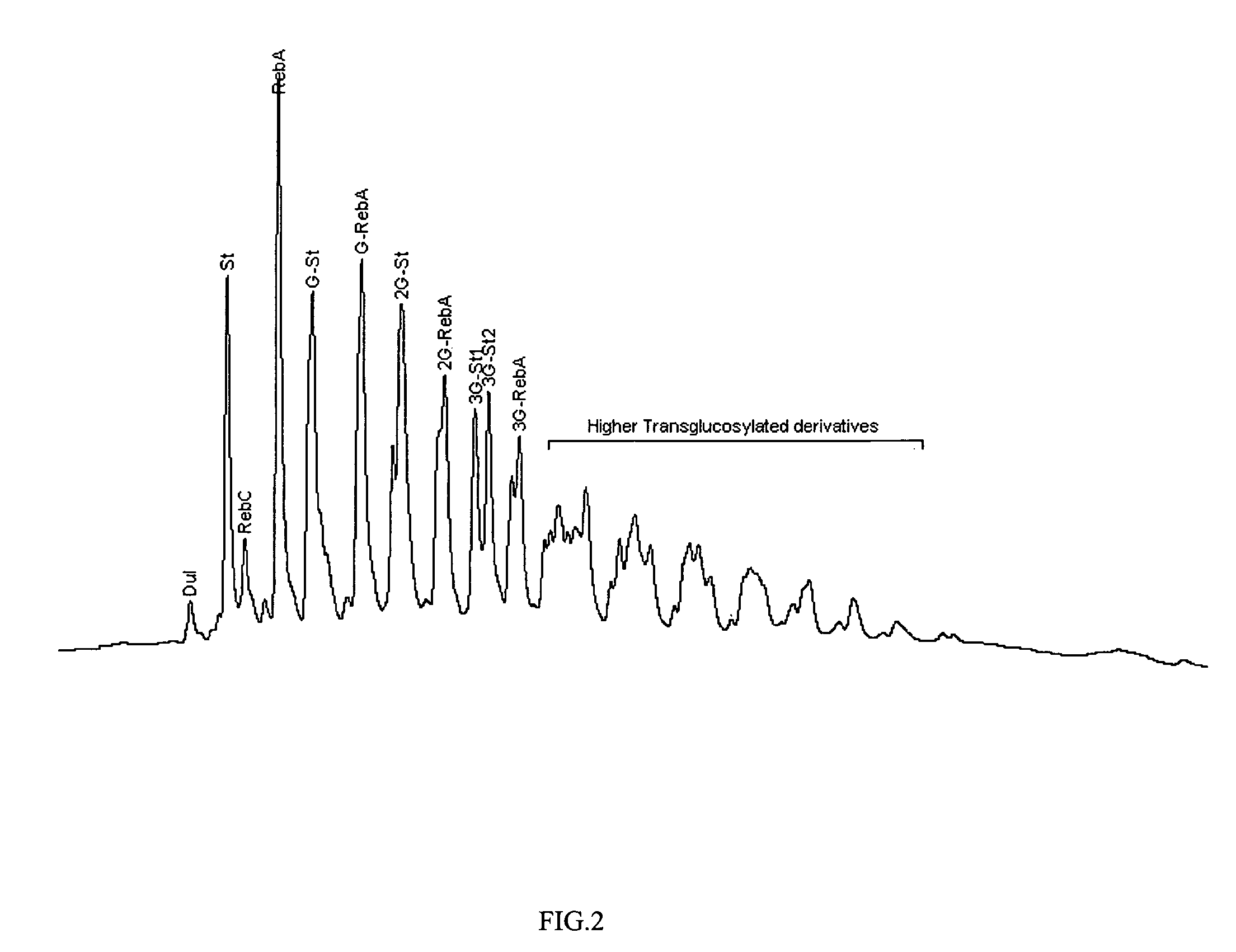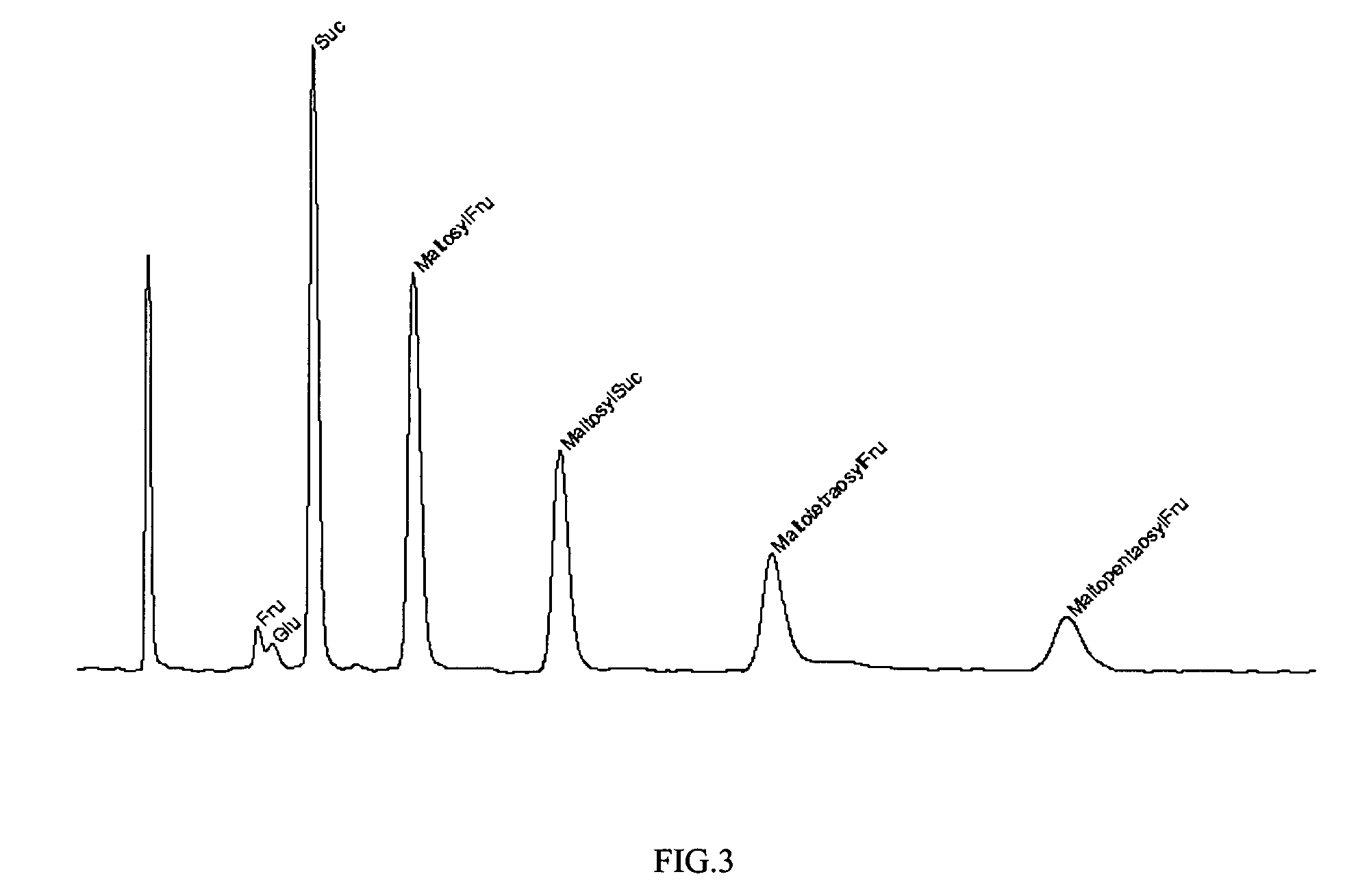Sweetner and use
a technology of sweetner and sugar, applied in the field of sweetner and use, can solve the problems of unable to define the preferred embodiment, possesses residual bitterness, and reduces the reaction time and consumption of enzymes
- Summary
- Abstract
- Description
- Claims
- Application Information
AI Technical Summary
Benefits of technology
Problems solved by technology
Method used
Image
Examples
example 1
Preparation of Cyclodextrin Glycosyltransferase
[0058]A strain of Bacillus stearothermophilus VKPM B-4905 was inoculated on 10 liters of a sterilized culture medium (pH 7.0-7.2) containing 0.7% (w / v) soluble starch, 0.5% (w / v) corn steep liquor, 0.53% (w / v) ammonium chloride, and 0.2% (w / v) calcium carbonate. The mixture was incubated at a temperature of 56° C. for 20 hours with aeration and stirring. The resultant culture broth was centrifuged, and the supernatant was concentrated up to five times on ultrafiltration membranes. The concentrated solution was diluted with three volumes of distilled water and again concentrated to the initial concentrate volume. The process was repeated for three times. A crude enzyme preparation with an activity of about 90,000 units was obtained.
example 2
Preparation of Sweetener
[0059]150 grams of commercialized Stevia extract (Ganzhou Julong High-Tech Food Industry Co., Ltd, China), containing stevioside (40%), rebaudioside A (42%), rebaudioside C (7%), and dulcoside (1%), with total content of 90%, were dissolved in 2000 ml of distilled water. After complete dissolving the pH of the solution was adjusted to 9.5 by about 3 grams of calcium hydroxide and maintained with slow agitation for 30 minutes at 50° C. Then, the suspension was cooled to ambient temperature, neutralized with about 6 grams of FeCl3 and agitation was continued for another 30 minutes.
[0060]The precipitate formed was removed by filtration, and the filtrate was deionized and decolorized by Amberlite FPC23 H, Amberlite FPA51, and Amberlite FPA98Cl in the conventional manner. The clear solution was passed through polysulfone based ultrafiltration membranes with a filtering discrimination of 2.5 kDa (Liumar Technologies, Ottawa, Canada) with diafiltration, concentrated...
example 3
Preparation of Sweetener
[0062]The reaction between purified Stevia extract and starch was carried out according to the procedure of EXAMPLE 2. After 12 hours, 20 grams of sucrose were added to reaction mixture and transformation was continued at 70° C. for another 5 hours. The obtained reaction mixture was treated similar to Sample 1. 217 grams of product were obtained (corresponds to Sample No. 2).
PUM
| Property | Measurement | Unit |
|---|---|---|
| temperature | aaaaa | aaaaa |
| temperature | aaaaa | aaaaa |
| cultivation time | aaaaa | aaaaa |
Abstract
Description
Claims
Application Information
 Login to View More
Login to View More - R&D
- Intellectual Property
- Life Sciences
- Materials
- Tech Scout
- Unparalleled Data Quality
- Higher Quality Content
- 60% Fewer Hallucinations
Browse by: Latest US Patents, China's latest patents, Technical Efficacy Thesaurus, Application Domain, Technology Topic, Popular Technical Reports.
© 2025 PatSnap. All rights reserved.Legal|Privacy policy|Modern Slavery Act Transparency Statement|Sitemap|About US| Contact US: help@patsnap.com



